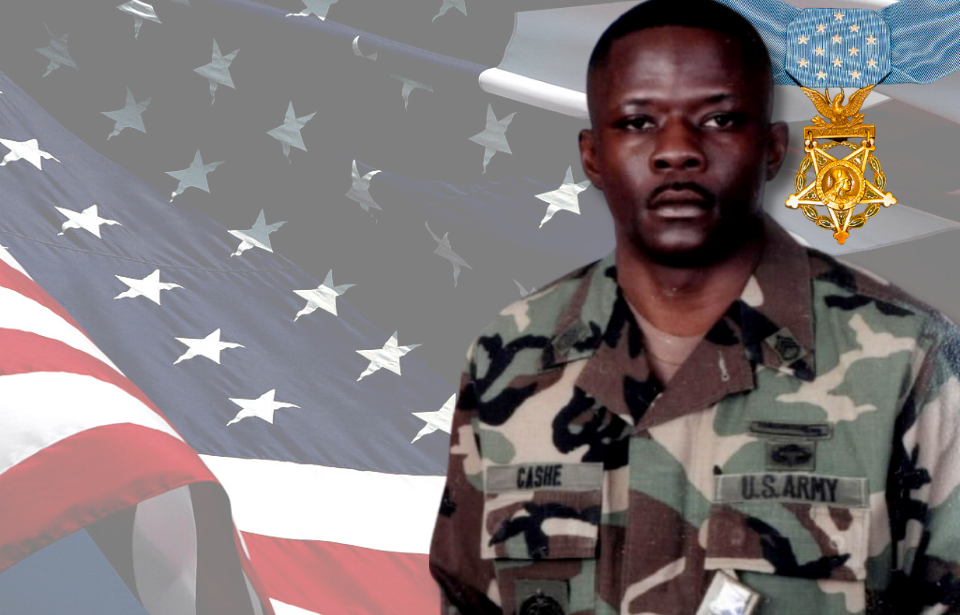The Medal of Honor is given for exceptional bravery in service to the U.S. Army. Recently, Sergeant First Class Alwyn Cashe was posthumously awarded this prestigious honor for his heroic actions, sacrificing his life to save his comrades after their vehicle was struck by an improvised explosive device (IED) in Iraq.
Military service prior to the War in Iraq
Alwyn Cashe enlisted in the US Army in 1989 after finishing high school. He was stationed in Korea for two years and served in the Gulf War, before completing a three-year assignment at Fort Lewis, Washington. In 1993, as an infantryman, he deployed to Korea once more for a year, then took on the position of squad leader at Fort Hood, Texas, before spending two years in Germany.
Cashe graduated from Drill Sergeant School in 1998 and served as a drill sergeant for two years at Fort Benning, Georgia. In February 2001, he returned to Europe, where he worked as an operations noncommissioned officer for the 19th Battlefield Coordination Detachment, and later led a squad in the 1st Battalion, 18th Infantry Regiment in Germany for two years.
In April 2004, he became a platoon sergeant in the 3rd Brigade, 3rd Infantry Division at Fort Benning.
Operation Iraqi Freedom
Sergeant First Class Alwyn Cashe served two tours in Iraq, the first during the 2003 invasion and the second during Operation Iraqi Freedom. During his second deployment, he served with A Company, 1st Battalion, 15th Infantry Regiment, 3rd Infantry Division.
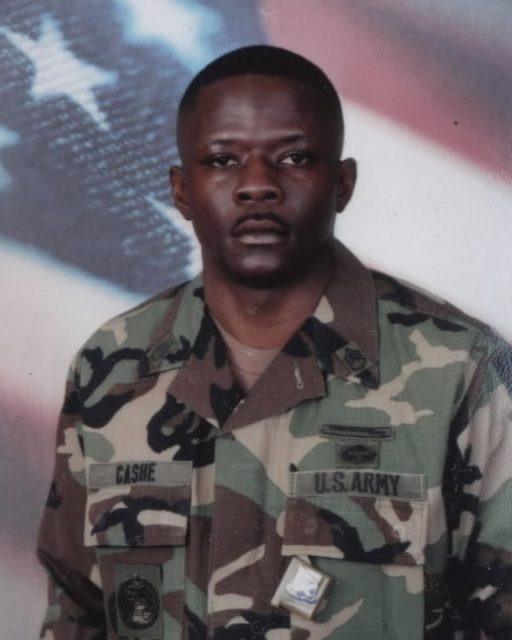
On the evening of October 17, 2005, Cashe’s unit set out on a routine clearance patrol, preparing for another convoy that was scheduled to pass through the area the following day. Although a dust storm was sweeping through the region, the mission was intended to be “a standard drive down to the bridge, make sure the route was clear, hang out for a bit, and drive right back,” with the exception that only two of the three Bradley Fighting Vehicles were able to participate.
Cashe’s Bradley was leading the convoy when it hit a roadside IED. The explosion ruptured the vehicle’s fuel cell, spraying those inside with fuel, and damaged the cargo hatch’s opening mechanism. Cashe, who was only lightly injured, managed to crawl out through the gunner’s hatch.
Six soldiers were trapped inside the vehicle, which was quickly consumed by flames. Despite his uniform being soaked in fuel, Cashe rescued the soldiers and removed the body of an Iraqi translator who had been killed in the blast.
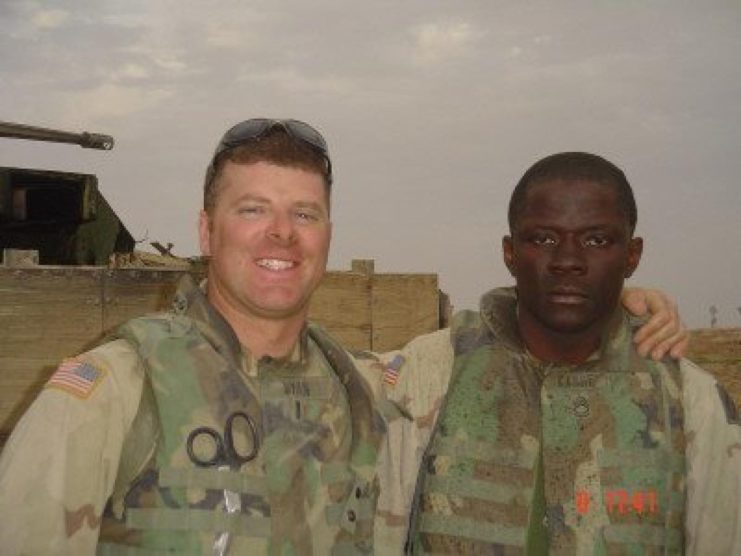
During the rescue, Cashe suffered second and third-degree burns to 72 percent of his body. He and the injured were medivaced to a nearby Iraqi military hospital, and he was later transported to Brooke Army Medical Center, Fort Sam Houston, Texas, where he succumbed to his injuries on November 8, 2005.
For his actions, he was nominated for the Silver Star by his battalion commander, Lieutenant General Gary Brito.
Road to the Medal of Honor
The effort to upgrade Sgt. 1st Class Cashe’s Silver Star to the Medal of Honor was initiated by Lt. Gen. Brito, who initially was unaware of the severity of Cashe’s injuries since the witnesses had been evacuated for medical care. Upon gaining a deeper understanding of Cashe’s actions, Brito provided additional statements to the Army to advocate for posthumously awarding him the honor.
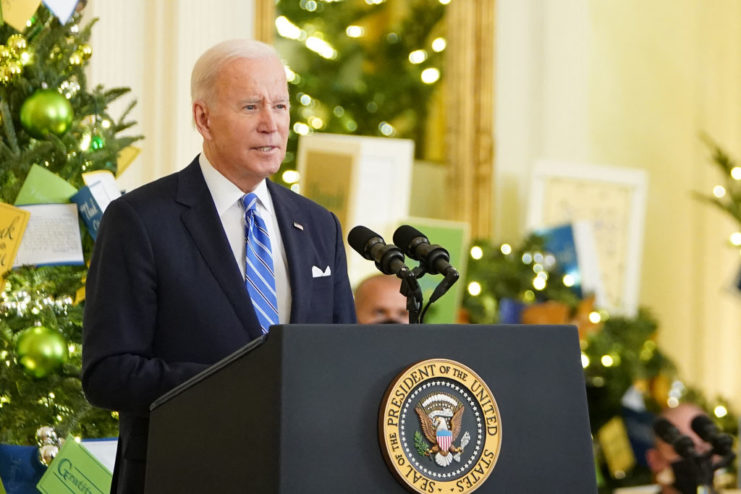
The effort to upgrade Cashe’s Silver Star resumed in October 2019, led by retired Navy SEAL Dan Crenshaw, Stephanie Murphy (D-FL) and former Special Forces officer Michael Waltz, who sent a letter to Secretary of Defense Mark Esper and Army Secretary Ryan McCarthy to advocate for the change.
Murphy took further action by introducing Bill HR 8276 in the US House of Representatives, which removed the five-year statute of limitations for Medal of Honor consideration and authorized the President to award the medal “for acts of valor during Operation Iraqi Freedom.” The bill passed the House with unanimous support on September 22, 2020, and was approved by the Senate slightly over a month later.
President Donald Trump signed it into law on December 3, 2020.
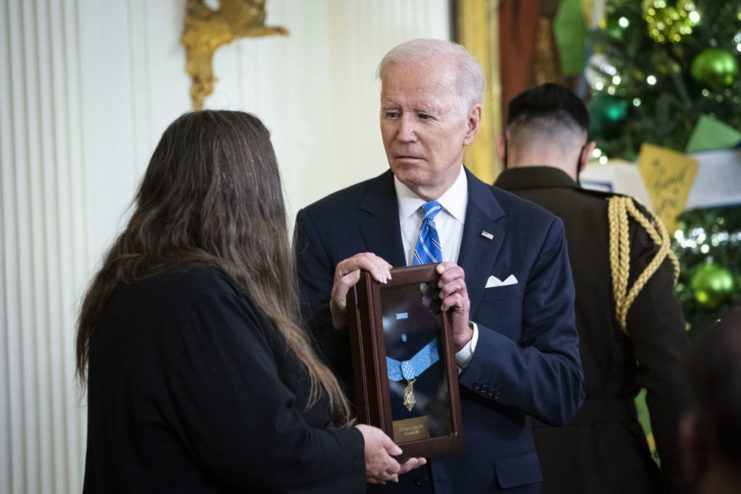
New! Want to become a trivia master? Sign up for our War History Fact of the Day newsletter!
On December 16, 2021, Cashe’s widow, Tamara, accepted the Medal of Honor on his behalf from President Joe Biden at a ceremony honoring him and two other service members, Sergeant First Class Christopher Celiz and Master Sergeant Earl Plumlee. He was the seventh soldier from Operation Iraqi Freedom to receive the honor and the first African-American since the Vietnam War.
Speaking at the ceremony, President Biden called him “a soldier’s soldier” and “a man who literally walked through fire for his men.”
